Failure Pattern Transition of Shape Memory NiTi Foam Subjected to Compression: From Quasi-Static to Dynamic
Abstract
:Featured Application
Abstract
1. Introduction
2. Materials and Test Methods
2.1. Static Compression and Recovery
2.2. Dynamic Compression and Recovery
3. Test Results with Discussions
3.1. Recovery Capacity of NiTi Foam Subjected to Static Load with Discussions
3.2. Recovery Capacity of NiTi Foam Subjected to Dynamic Load with Discussions
4. Conclusions
Author Contributions
Acknowledgments
Conflicts of Interest
References
- Jani, J.M.; Leary, M.; Subic, A.; Gibson, M.A. A review of shape memory alloy research, applications and opportunities. Mater. Des. 2014, 56, 1078–1113. [Google Scholar] [CrossRef]
- Seo, J.; Kim, Y.C.; Hu, J.W. Pilot study for investigating the cyclic behavior of slit damper systems with recentering shape memory alloy (SMA) bending bars used for seismic restrainers. Appl. Sci. 2015, 5, 187–208. [Google Scholar] [CrossRef]
- Panton, B.; Oliveira, J.P.; Zeng, Z.; Zhou, Y.N.; Khan, M.I. Thermomechanical fatigue of post-weld heat treated NiTi shape memory alloy wires. Int. J. Fatigue 2016, 92, 1–7. [Google Scholar] [CrossRef]
- Ng, S.B.; Huang, W.M.; Shu, D.W. Plastic energy and tearing energy of a NiTi shape memory alloy wire. Mater. Des. 2008, 29, 1066–1069. [Google Scholar] [CrossRef]
- Gadot, B.; Martinez, O.R.; Roscoat, S.R.; Bouvard, D.; Rodney, D.; Orgéas, L. Entangled single-wire NiTi material: A porous metal with tunable superelastic and shape memory properties. Acta Mater. 2015, 96, 311–323. [Google Scholar] [CrossRef]
- Gibson, L.J.; Ashby, M.F. Cellular Solids: STRUCTURES and Properties, 2nd ed.; Cambridge University Press: Cambridge, UK, 1997. [Google Scholar]
- Lu, G.X.; Yu, T.X. Energy Absorption of Structures and Materials; CRC Press: Boca Raton, FL, USA, 2003. [Google Scholar]
- Ashby, M.F.; Evans, A.; Fleck, N.A.; Gibson, L.J.; Hutchinson, J.W.; Wadley, H.N.G. Metal Foams: A Design Guide; Butterworth-Heinmann: Woburn, MA, USA, 2000. [Google Scholar]
- Zhou, H.Y.; Ma, G.W.; Li, J.D.; Zhao, Z.Y. Design of metal foam cladding subjected to close-range blast. J. Perform. Constr. Facil. 2015, 29, 04014110. [Google Scholar] [CrossRef]
- Xia, Y.; Wu, C.Q.; Liu, Z.X.; Yuan, Y.M. Protective effect of graded density aluminium foam on RC slab under blast loading—An experimental study. Constr. Build. Mater. 2016, 111, 209–222. [Google Scholar] [CrossRef]
- Shen, J.H.; Lu, G.X.; Zhao, L.M.; Zhang, Q.M. Short sandwich tubes subjected to internal explosive loading. Eng. Struct. 2013, 55, 56–65. [Google Scholar] [CrossRef]
- Soni, B.; Biswas, S. Mass-scale processing of open-cell metallic foams by pressurized casting method. J. Porous Mater. 2017, 24, 29–37. [Google Scholar] [CrossRef]
- Bassani, P.; Panseri, S.; Ruffini, A.; Montesi, M.; Ghetti, M.; Zanotti, C.; Tampieri, A.; Tuissi, A. Porous NiTi shape memory alloys produced by SHS: Microstructure and biocompatibility in comparison with Ti2Ni and TiNi3. J. Mater. Sci. Mater. Med. 2014, 25, 2277–2285. [Google Scholar] [CrossRef] [PubMed]
- Xu, J.L.; Bao, L.Z.; Liu, A.H.; Jin, X.J.; Tong, Y.X.; Luo, J.M.; Zhong, Z.C.; Zheng, Y.F. Microstructure, mechanical properties and superelasticity of biomedical porous NiTi alloy prepared by microwave sintering. Mater. Sci. Eng. C 2015, 46, 387–393. [Google Scholar] [CrossRef] [PubMed]
- Bewerse, C.; Emery, A.A.; Brinson, L.C.; Dunand, D.C. NiTi porous structure with 3D interconnected microchannels using steel wire spaceholders. Mater. Sci. Eng. A 2015, 634, 153–160. [Google Scholar] [CrossRef]
- Kaya, M.; Cakmak, O. Shape Memory behavior of porous NiTi alloy. Metall. Mater. Trans. A 2016, 47, 1499–1503. [Google Scholar] [CrossRef]
- Karamooz Ravari, M.R.; Kadkhodaei, M.; Ghaei, A. A unit cell model for simulating the stress-strain response of porous shape memory alloys. ASM Int. 2015, 24, 4096–4105. [Google Scholar] [CrossRef]
- Lou, L.; He, H.; Li, Y.M.; Zhu, C.Q.; Chen, Z.Y.; Liu, C. Effects of high O contents on the microstructure, phase-transformation behaviour, and shape-recovery properties of porous NiTi-based shape-memory alloys. Mater. Des. 2016, 106, 37–44. [Google Scholar] [CrossRef]
- Nathal, M.V.; Krause, D.L.; Wilmoth, N.G.; Bednarcyk, B.A.; Baker, E.H. Three-Dimensional Cellular Structures Enhanced by Shape Memory Alloys; NASA/TM-2014-218324; Glenn Research Center: Cleveland, OH, USA, 2014. [Google Scholar]


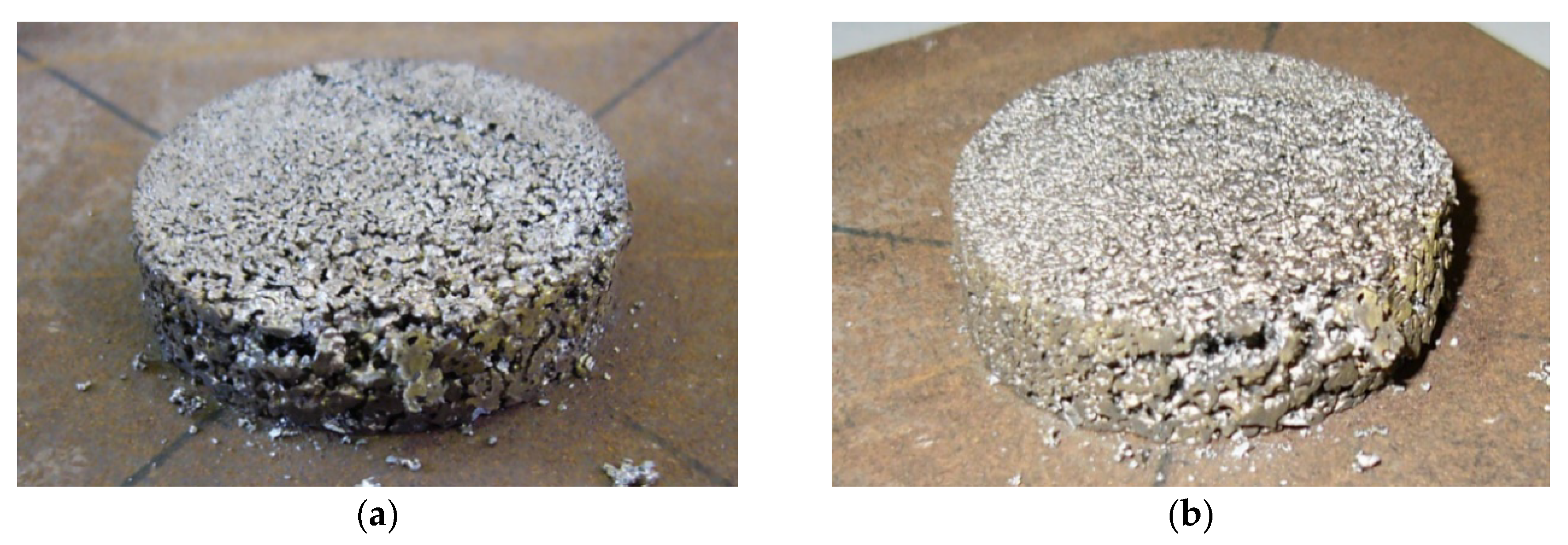

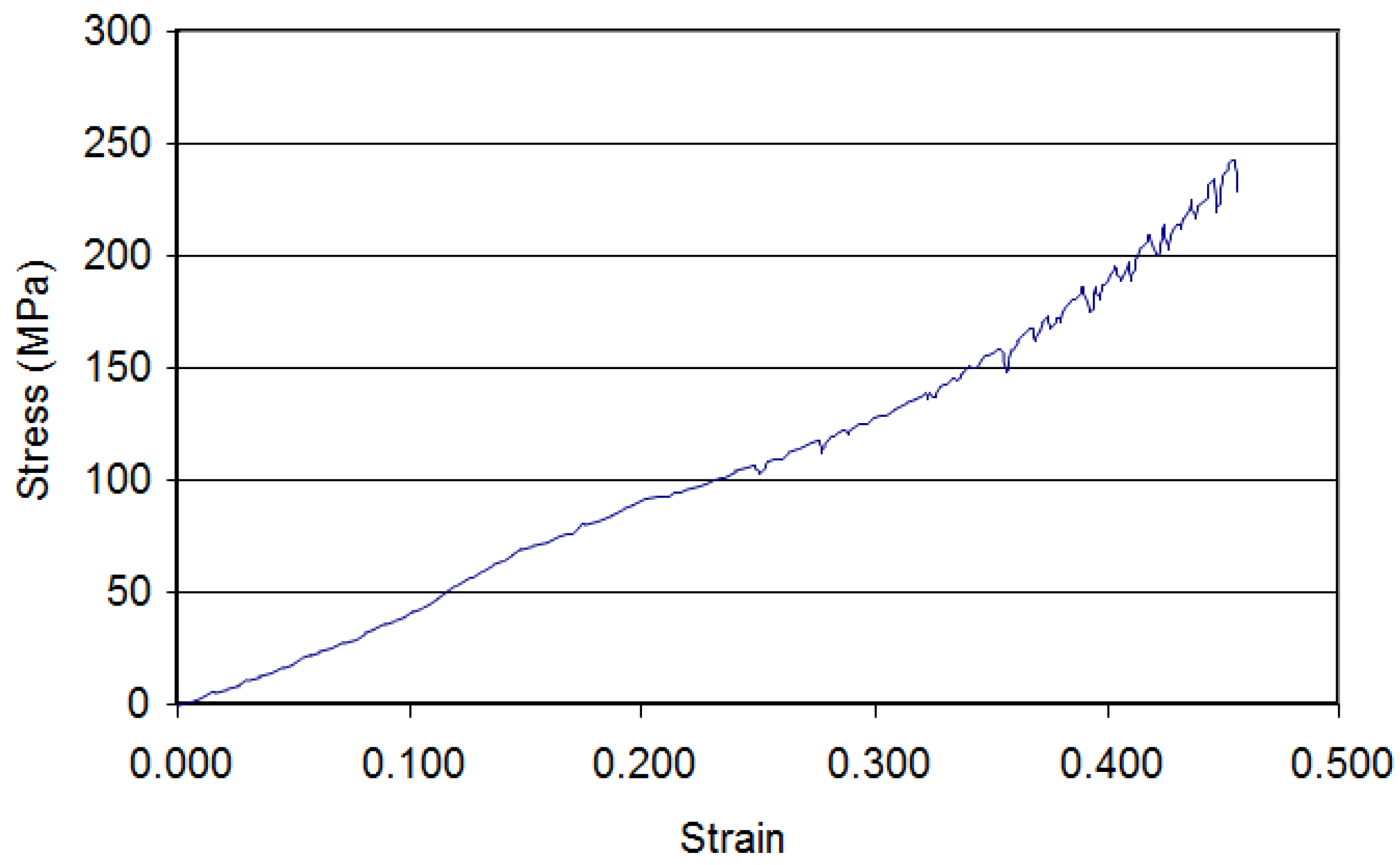
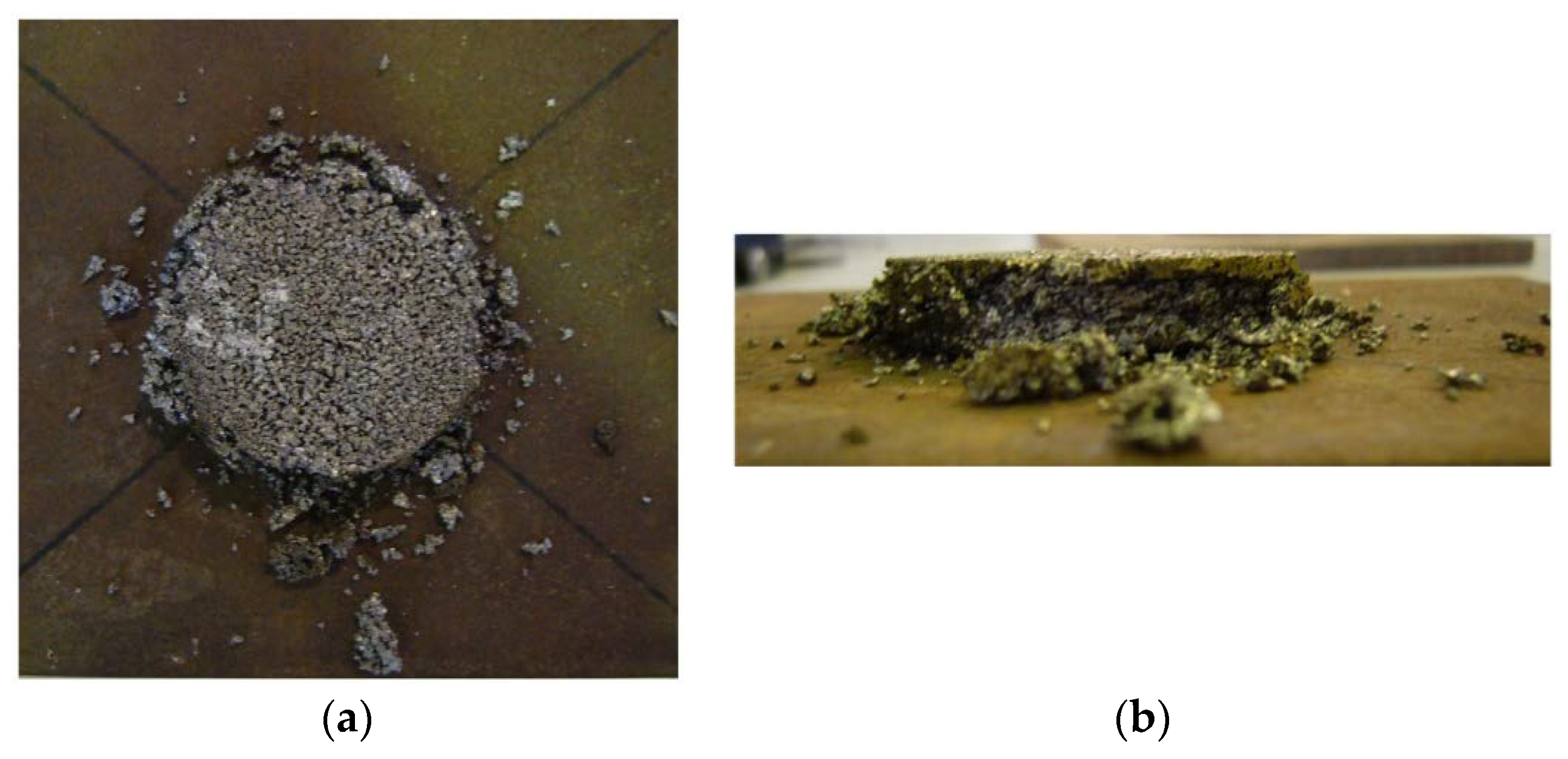
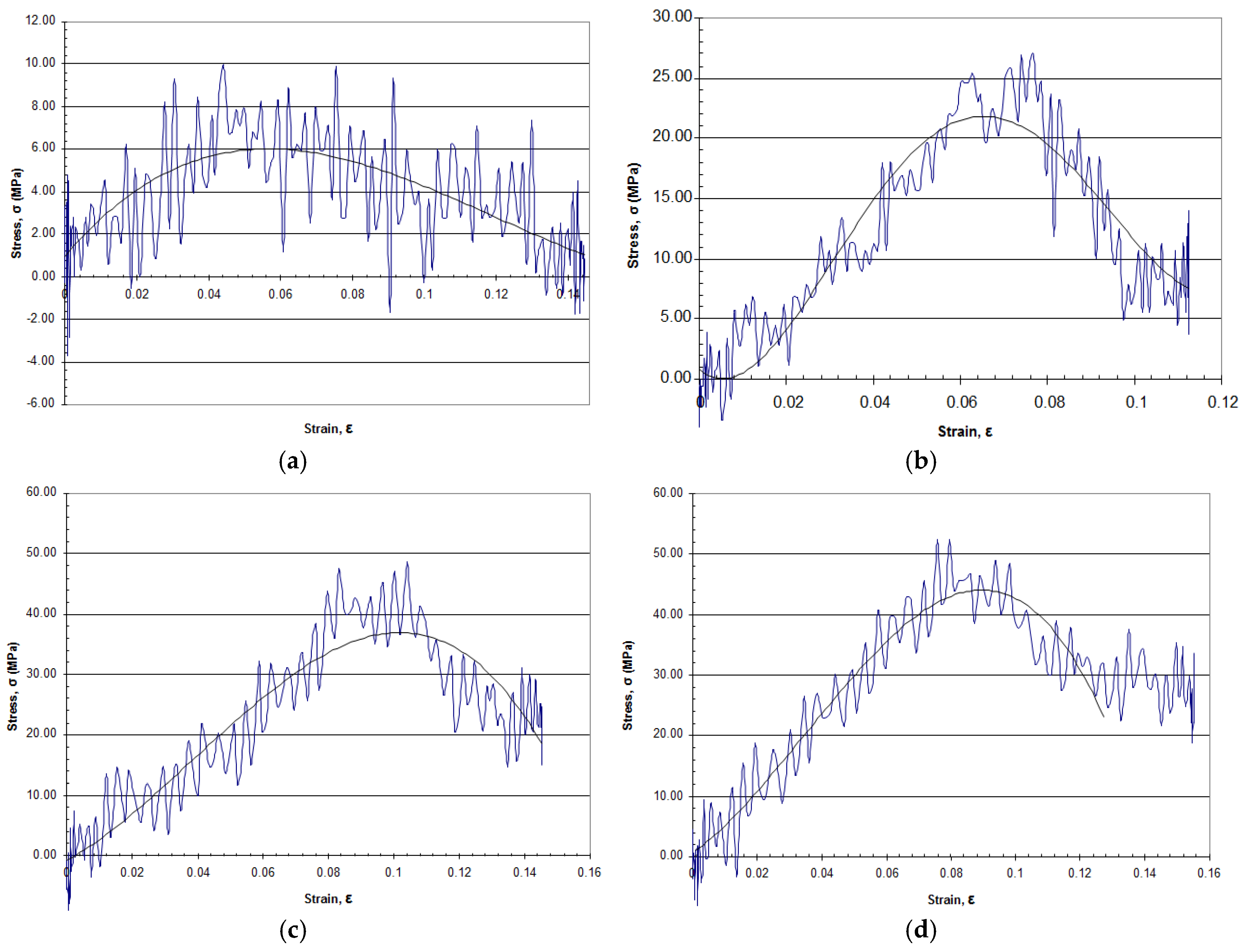

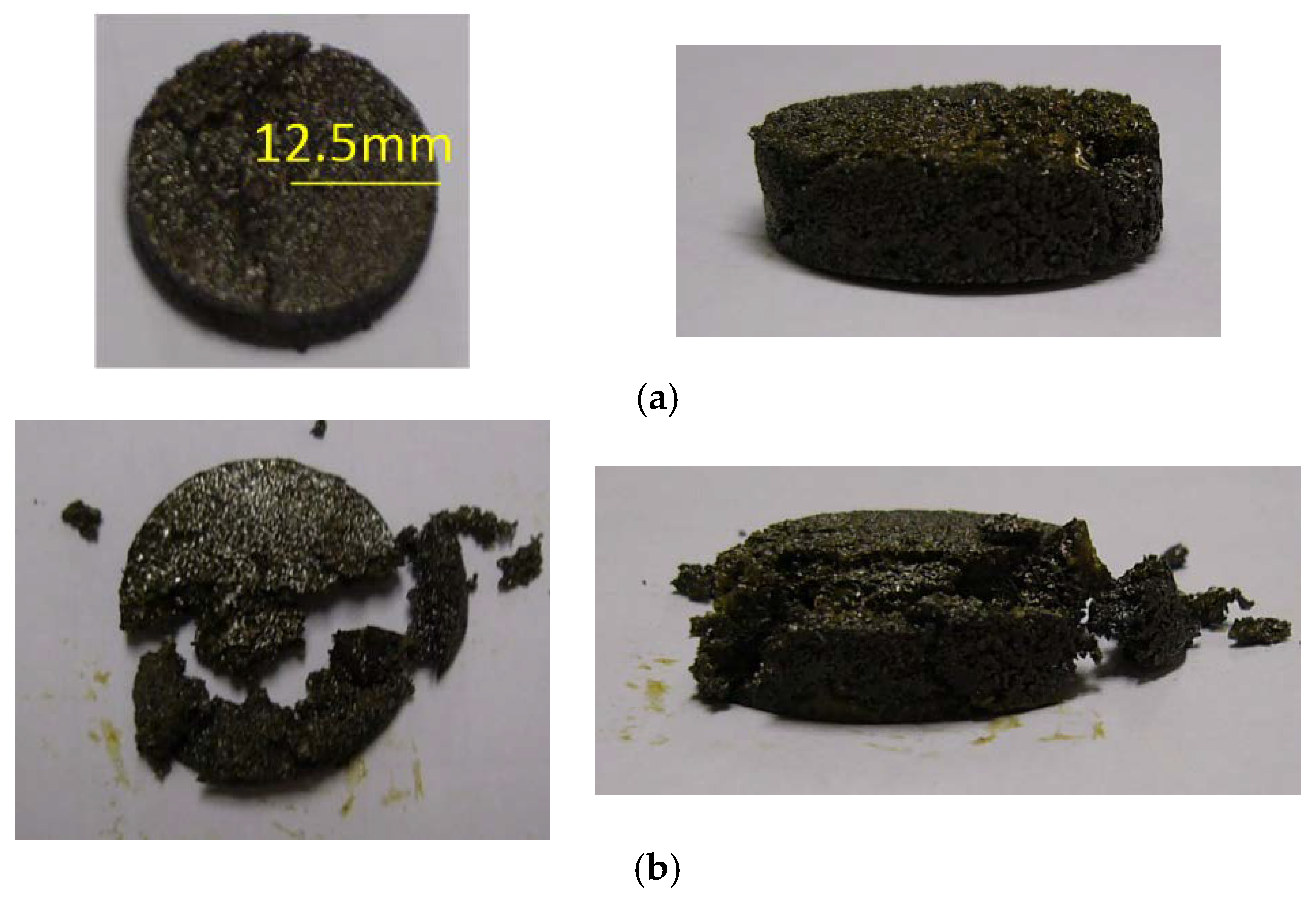
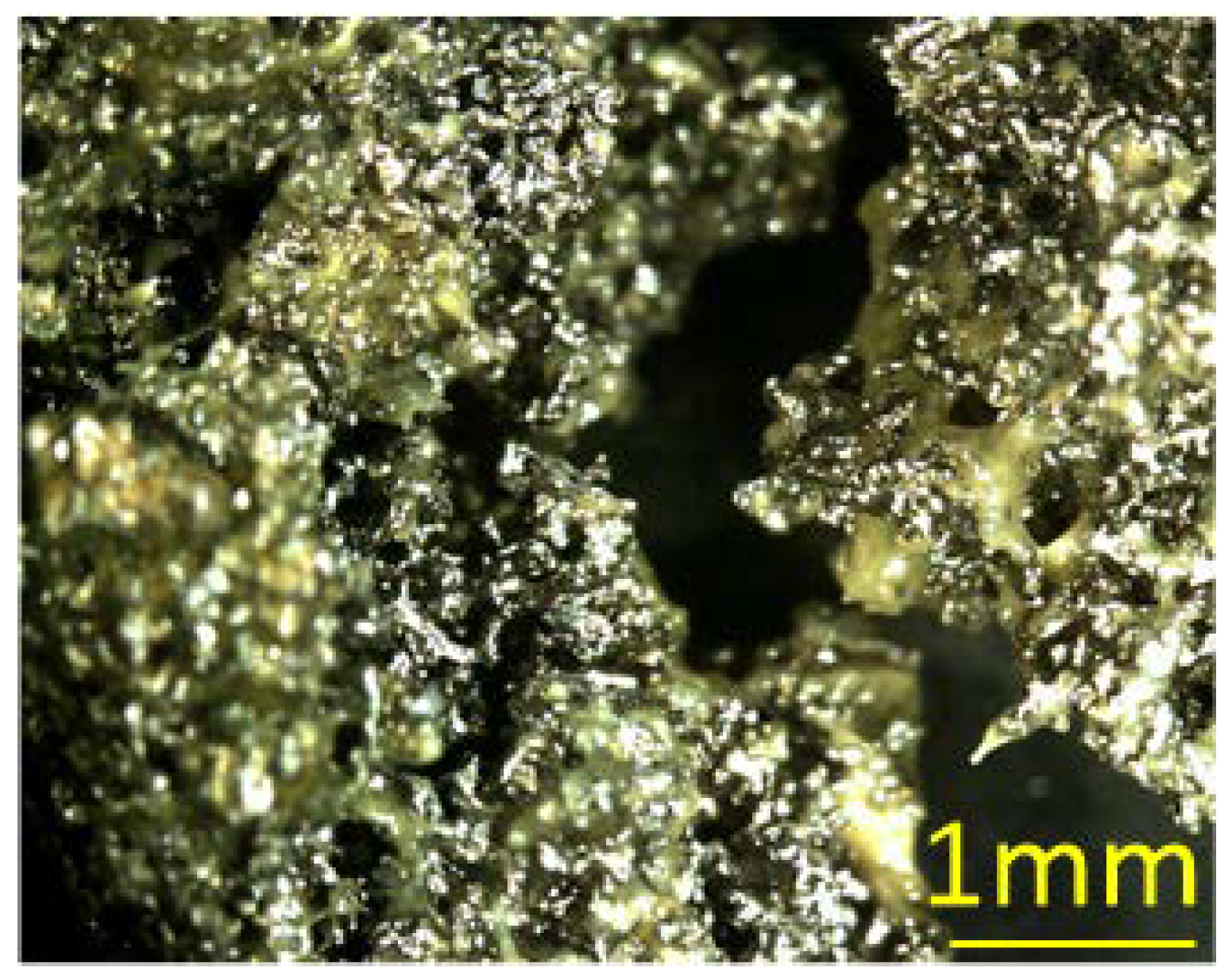
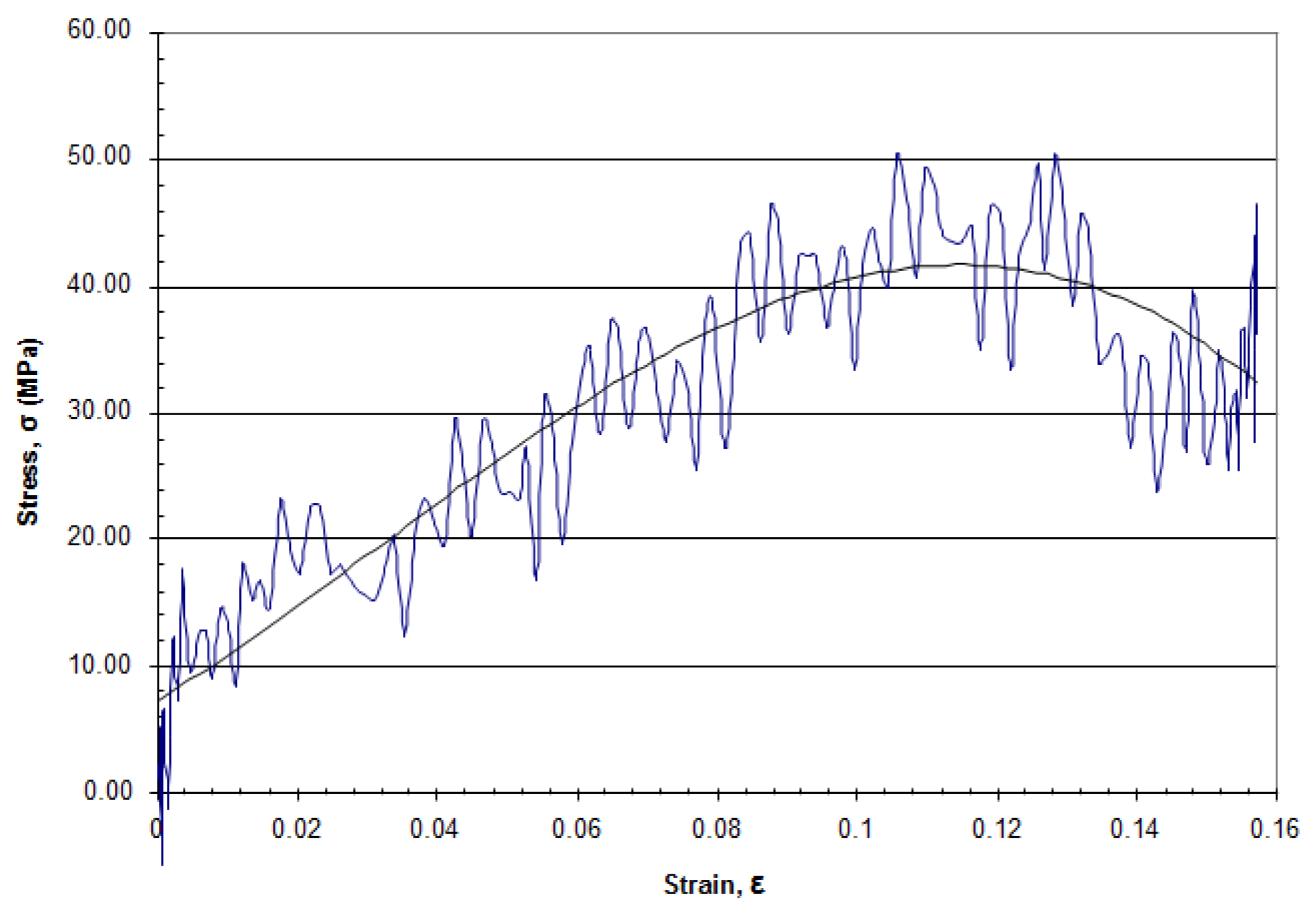
| Test No. | Deformation | Dimension of Specimen | |||||
|---|---|---|---|---|---|---|---|
| Before Test | After Test | After Recovery | |||||
| Thickness (mm) | Diameter (mm) | Thickness (mm) | Diameter (mm) | Thickness (mm) | Diameter (mm) | ||
| 1 | 10% | 12.20 | 40.00 | 11.75 | 40.12 | 11.92 | 40.18 |
| 2 | 10% | 11.92 | 40.18 | 11.56 | 40.40 | 11.67 | 40.17 |
| 3 | 10% | 11.67 | 40.17 | 11.54 | 40.41 | 11.63 | 40.22 |
| 4 | 10% | 11.63 | 40.22 | 11.55 | 40.40 | 11.62 | 40.21 |
| 5 | 10% | 11.62 | 40.21 | 11.53 | 40.40 | 11.61 | 40.23 |
| Test No. | Deformation | Dimension of Specimen | |||||
|---|---|---|---|---|---|---|---|
| Before Test | After Test | After Recovery | |||||
| Thickness (mm) | Diameter (mm) | Thickness (mm) | Diameter (mm) | Thickness (mm) | Diameter (mm) | ||
| 1 | 20% | 12.75 | 40.00 | 12.10 | 40.30 | 12.39 | 40.10 |
| 2 | 20% | 12.39 | 40.10 | 11.25 | 41.10 | 11.65 | 40.90 |
| 3 | 20% | 11.65 | 40.90 | 10.65 | 42.12 | 11.18 | 41.57 |
| 4 | 20% | 11.18 | 41.57 | 10.32 | 42.25 | 10.80 | 42.14 |
| Test No. | Pressure (MPa) | Striker Velocity (m/s) | Before Test | After Test | After Recovery | |||
|---|---|---|---|---|---|---|---|---|
| Thickness (mm) | Diameter (mm) | Thickness (mm) | Diameter (mm) | Thickness (mm) | Diameter (mm) | |||
| 1-1 | 1.0 | 14.133 | 8.84 | 25.00 | 7.71 | 25.15 | 7.95 | 25.13 |
| 1-2 | 1.0 | 13.414 | 7.95 | 25.13 | 7.51 | 25.41 | 7.81 | 25.35 |
| 1-3 | 1.0 | 13.922 | 7.81 | 25.35 | 7.13 | 25.48 | 7.29 | 25.39 |
| 1-4 | 1.0 | 13.904 | 7.29 | 25.39 | 7.00 | 25.52 | 7.05 | 25.52 |
| 2-1 | 1.5 | 16.696 | 10.80 | 25.00 | 8.89 | 25.65 | 9.15 | 25.53 |
| 2-2 | 1.5 | 16.467 | 9.15 | 25.53 | 7.79 | 26.47 | 8.14 | 26.10 |
| 3-1 | 1.5 | 16.206 | 9.42 | 25.00 | 7.62 | 25.83 | 7.86 | 25.53 |
| 3-2 | 1.5 | 16.727 | 7.86 | 25.53 | 6.75 | 25.92 | 6.93 | 25.94 |
| 4-1 | 2.0 | 24.812 | 10.44 | 25.00 | 7.55 | 26.96 | 7.63 | 26.88 |
© 2018 by the authors. Licensee MDPI, Basel, Switzerland. This article is an open access article distributed under the terms and conditions of the Creative Commons Attribution (CC BY) license (http://creativecommons.org/licenses/by/4.0/).
Share and Cite
Wang, X.; Zhou, H. Failure Pattern Transition of Shape Memory NiTi Foam Subjected to Compression: From Quasi-Static to Dynamic. Appl. Sci. 2018, 8, 741. https://doi.org/10.3390/app8050741
Wang X, Zhou H. Failure Pattern Transition of Shape Memory NiTi Foam Subjected to Compression: From Quasi-Static to Dynamic. Applied Sciences. 2018; 8(5):741. https://doi.org/10.3390/app8050741
Chicago/Turabian StyleWang, Xiaojuan, and Hongyuan Zhou. 2018. "Failure Pattern Transition of Shape Memory NiTi Foam Subjected to Compression: From Quasi-Static to Dynamic" Applied Sciences 8, no. 5: 741. https://doi.org/10.3390/app8050741




